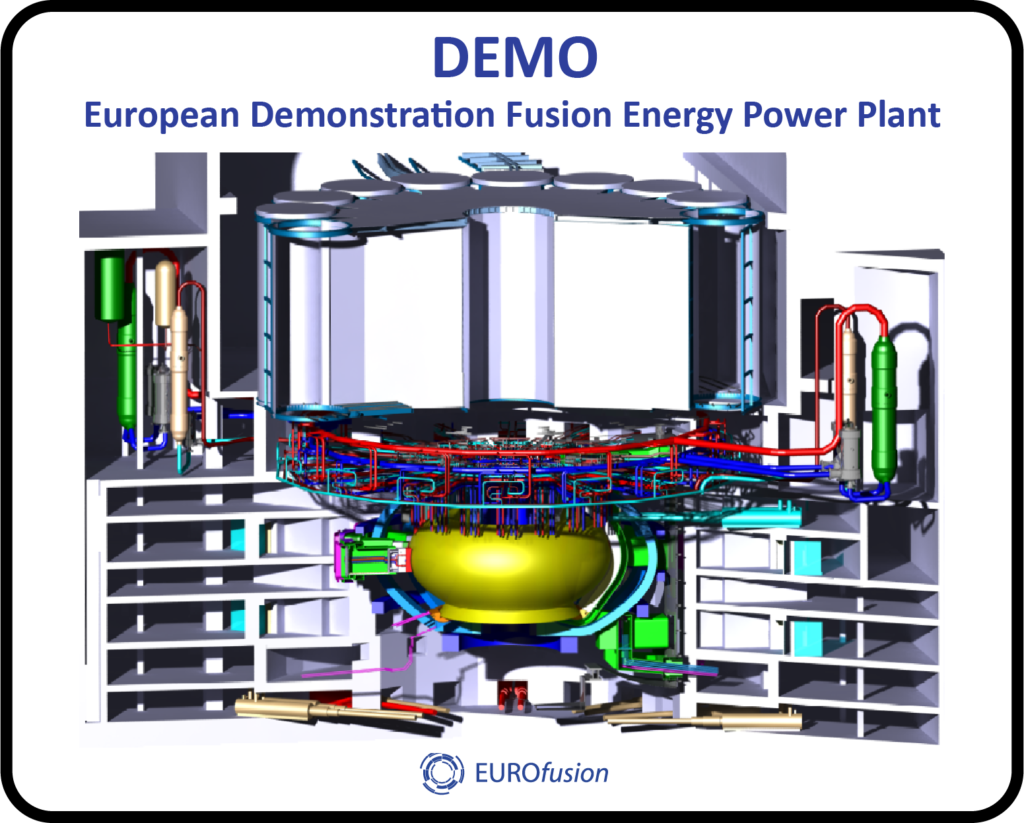The European research consortium EUROfusion charts a route of scientific and engineering research from the basic science at current devices, all the way to designing the demonstration fusion power plant DEMO, capable of net electricity production shortly after the middle of the century in its Roadmap to Fusion Energy.
DEMO is a first-of-its-kind facility that represents the next technological step after the global ITER fusion experiment. It aims to demonstrate the net production of 300 to 500 hundred megawatts of electricity, as well as essential technologies such as remote maintenance and tritium breeding. This latter technology to produce the tritium fusion fuel on-site is a crucial requirement not just for DEMO but also for any future fusion power device to follow ITER.
Pre-concept design
To share the state-of-the-art in demonstration-power-plant design with the world, the DEMO team presents the result of their Pre-Concept Design Phase (2014-2020) in a special issue of the scientific journal Fusion Engineering & Design. In 25 peer-reviewed open access scientific publications along with seven support non-manuscript articles, they cover topics from power exhaust to tritium breeding, extraction of high-grade heat from the breeding blanket, remote maintenance for in-vessel components, robust magnet designs, qualified structural and plasma-facing component materials, as well as nuclear safety and integration.
In the concluding remarks to the special issue, Gianfranco Federici, Head of the Fusion Technology Department at EUROfusion, and Tony Donné, EUROfusion Programme Manager, summarise the main lessons learned in the initial effort to design DEMO.
“The DEMO design and R&D activities in Europe are benefitting largely from the experience gained from the design, licencing, and construction of ITER.”
“There are many discussions about making fusion power devices smaller, cheaper, and faster, but the truth is that there is no silver bullet to solve the complex nuclear design integration problems of a fusion device. The design activities for DEMO therefore consider all those topics in an integrated approach”.
“Uncertainties in fusion science and engineering will persist throughout the Concept and Engineering Design Phases. The importance of managing complexity and uncertainty was identified and a preliminary adequate systems engineering framework has been implemented and this will be developed further in future, with the aim of establishing a robust, repeatable, and traceable decision-making process for the DEMO architecture. Radiation shielding and safety play an overwhelming role in the design, and propagation of safety requirements on the design should not be postponed. An early engagement with licensing regulators would be very useful to understand and tackle potential safety implications through design amelioration.”

Experience
The two researchers conclude the summary of DEMO R&D by presenting the plan for the future. “This hinges on timing and skilled people as much as on implementing a technology maturation plan that critically relies on the availability of existing and new technology facilities. Additionally there is the need to expand the training of young engineers, to bring industry into the design process, and to expand international collaboration to fill critical gaps.”
“Dedicated education and training programmes, in universities and fusion laboratories, are absolutely vital to sustain the effort to develop fusion and breed the new generation of fusion scientists and engineers. If the DEMO Engineering Design efforts starts too long after ITER is delivered, a highly skilled and experienced workforce will be lost to other industries, with an unavoidable brain drain and loss of lessons learned.”
“That is why we focus on attracting talented, enthusiastic people to the field, especially engineers who have a systemic view of the entire plant.”
EUROfusion trains over 700 PhD students across Europe, and attracts talent through 15 EUROfusion Engineering Grants and 10 Researcher Grants each year.
